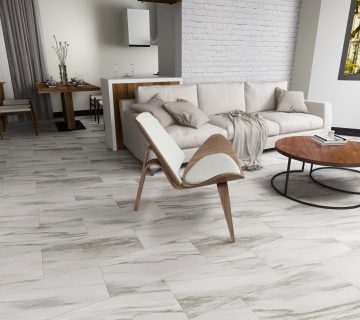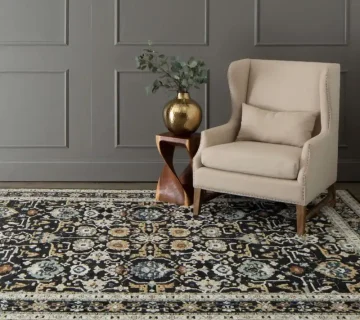It is not often realized that the materials used for interior design could be threatening the environment or even your health. It is always a wise option to look out for an eco-friendly interior designer who could bring your ideas to your life at an affordable cost while ensuring the materials used don’t endanger the environment or put you at the risk of respiratory problems and other conditions.
Paint
A host of eco-friendly solutions are in the market if you only look for them. Eco-friendly paint is one, conventional paints and finishes are quite dangerous if scientific reports and investigations by interior designers are to be believed. They are said to release low level toxic emissions long after they have dried on your walls. Paints with Low-Volatile Organic Compounds (Low-VOC and No-VOC) are the solution. You can feel the difference they are free from odor, thanks to the lack of harmful chemicals. Some of these eco-friendly paints are however expensive and may turn those on a budget off. But it is important to remember that it is almost impossible to create 100% non-toxic and non-allergenic paint even though manufacturers claim so. What can be done is to use paints that have a lesser concentration of the harmful elements which is effectively what the Low-VOC and No-VOC paints are.
Wallpaper
For those who would like a bit of vibrancy added to their walls, eco-friendly wallpapers are around. The problem with the regular wallpapers lies in the inks that are used while manufacturing. Eco-friendly wallpapers feature water-based inks; these inks are printed on chlorine-free paper obtained from forests specifically managed for the purpose. Low-VOC adhesive can be used for lightweight and medium weight paper-based wall decorations.
Carpets
Once you are done with the walls it is time to turn your interior design cravings to the floor. The pollution hazard with generally used carpets and flooring is that their installation can fill the indoor air with plenty of VOCs or volatile organic compounds. Included in these VOCs are carcinogens such as formaldehyde and benzene. You certainly would not want yourself or your loved ones to be inhaling these toxic substances. You ca not escape from it as these compounds could take years to dissipate, long after your flooring has been completed. What’s more, the treatment employed to keep the carpets free from moths, soil and moisture involves toxic chemicals. The carpets themselves could attract toxic substances and VOCs from outside the house. The good news is that eco-friendly interior designs can be employed here as well. There is wide variety of eco-friendly flooring options that include bamboo, cork, recycled metal and glass tiles, linoleum, stones and sustainable and reclaimed woods.
Carpet Tiles
Check out modular carpet tile squares that can used in place of the traditional carpet, these tiles are held to the ground by adhesive dots. They resemble the conventional carpet when all the tiles fall in place together, but are made from totally recycled materials and can be recycled again and again square-by-square. If you’ve dirtied one square by mistake it can be given to be recycled while you get a new tile!
Uses for Bamboo
Bamboo is an excellent option for eco-friendly flooring as well. Interior designers could give you innovative ideas to use bamboo for not only flooring but an array of interior furnishings. Recycled metal tiles available in aluminum as well as brass from dealers are great for the bathroom, kitchen floors and walls. They are often thought of as fashionable interior design statements. Available in polished, matte or rough finish, they can satisfy the decorative tastes of many, especially offering a contrast with wood used elsewhere in the room.
Sustainable and Reclaimed Wood
Sustainable and reclaimed wood are great interior design options and they work for floors as well as furniture. Rapidly disappearing forests have spawned the need for sustainable wood products. These wood products are made with wood from managed forests. The difference between a regular and managed forest is that the latter is never destroyed in one clear sweep (clear-cutting) as is the case with other forests. Only selected trees are removed, leaving behind a variety of different tree species. Each area of forest is then managed and replanted giving a 30 years cycle of regeneration of the forest to be complete before the felling starts again. This system does not deplete the land of its tree cover and it also ensures a constant supply of wood.
Here’s how interior designers can find out if the furniture or wooden accessories they purchase is made from wood from sustainable and managed forests. The Forest Stewardship Council (FSC) seal is one of the seals that are reliable, the other being Rainforest Alliance’s “SmartWood”, and the SCS and “Green Seal” labels from Scientific Certification Systems. FSC works globally to ensure responsible use of the forests of the world. The FSC certification only falls on forest managers and manufacturers who have satisfied the highest environmental and social standards in all stages of the wood production cycle, from the forest to the market through the factory. There’s no better way to balance the interests of society, environment and industry.
Beds, bed frames, dressers, nightstands and accessories are all available from sustainable wood certified by the FSC and other organizations, while reclaimed wood products are also around. Reclaimed wood products are made from wood that have previously served in structures and flooring. No fresh tree is cut to create a reclaimed wood product.
And Finally…
If you make the decision to make the environment safer for everyone, there are plenty of options you can try out. Beginning with the floor, you can customize everything from furniture and accessories to flooring and walls. Newer eco-friendly ideas are set to come up in the market as well. Kick-start the eco-friendly revolution!


